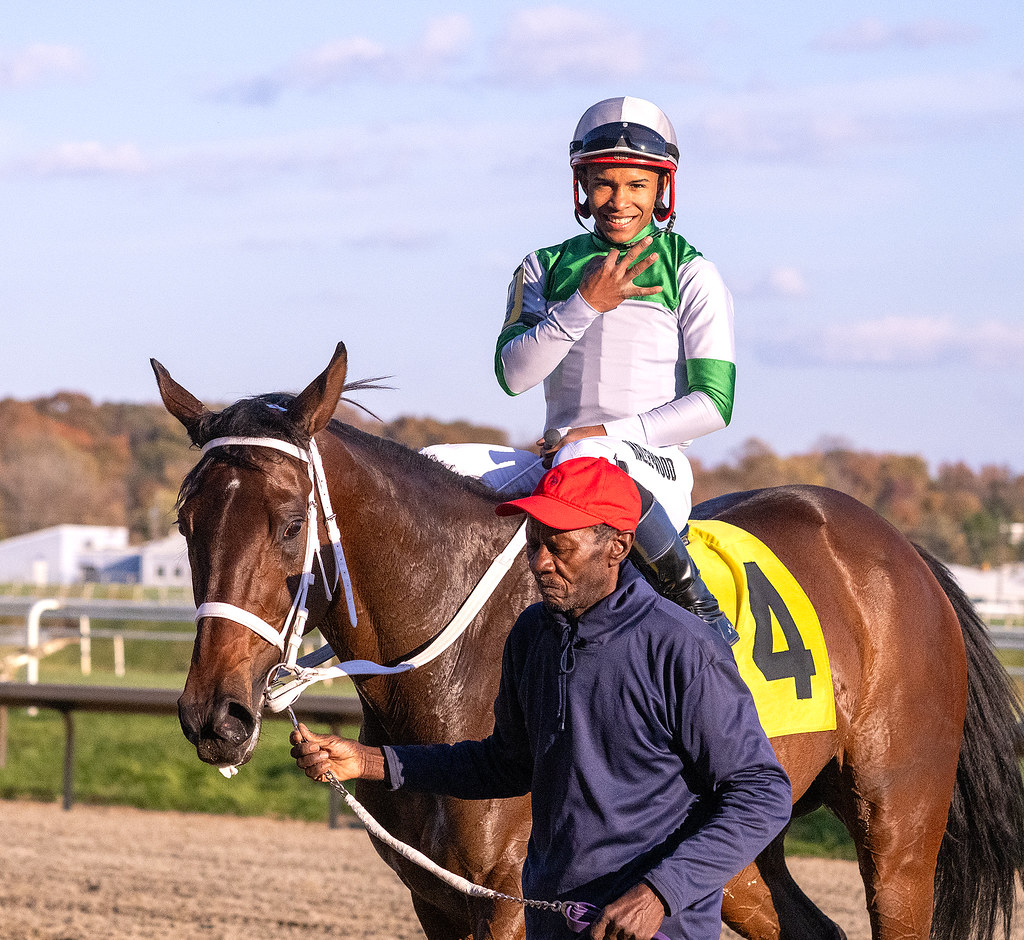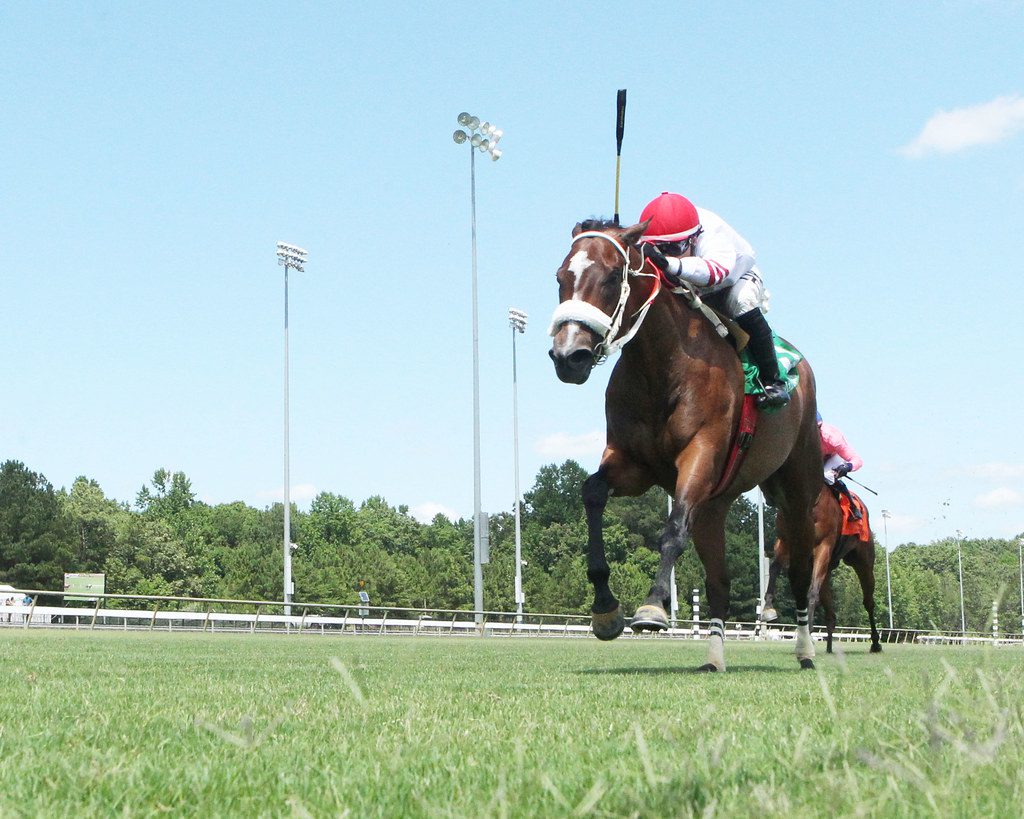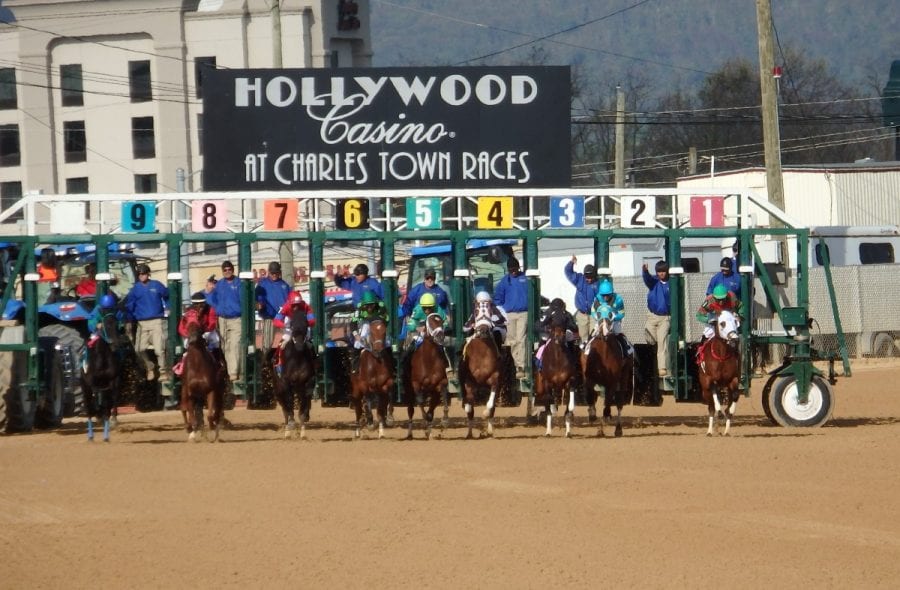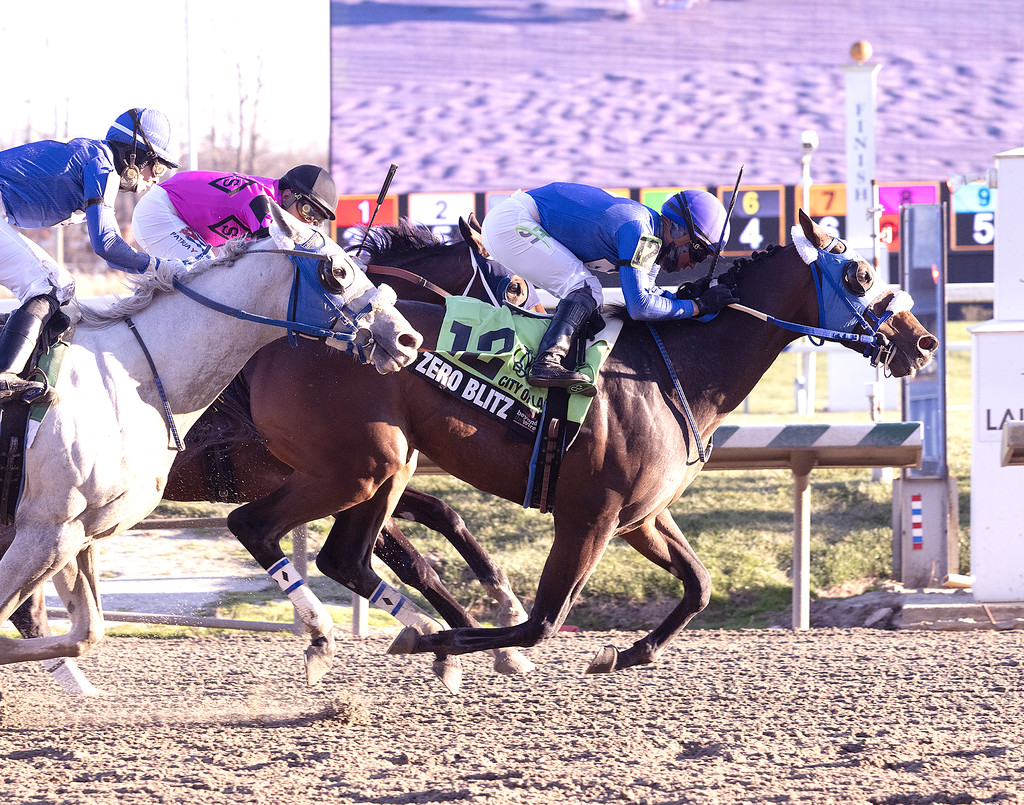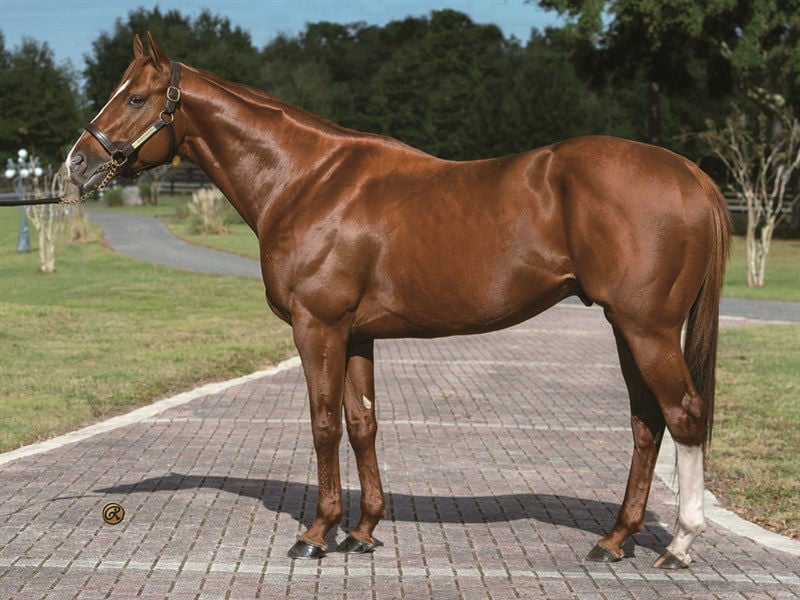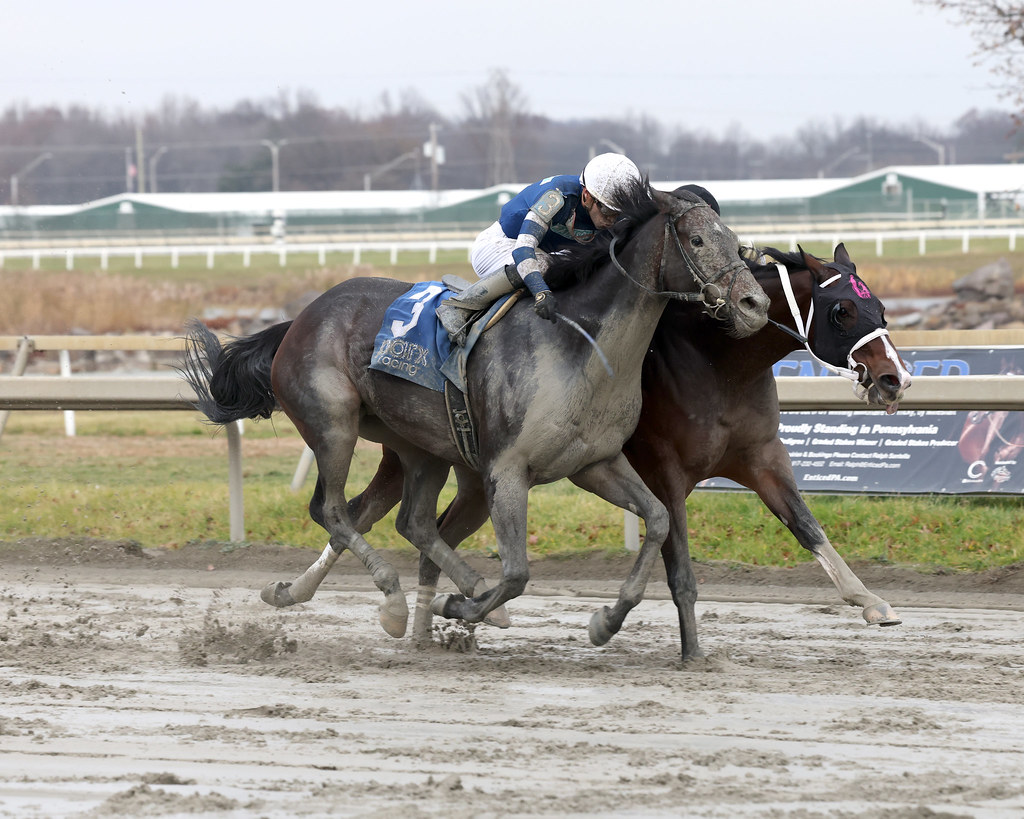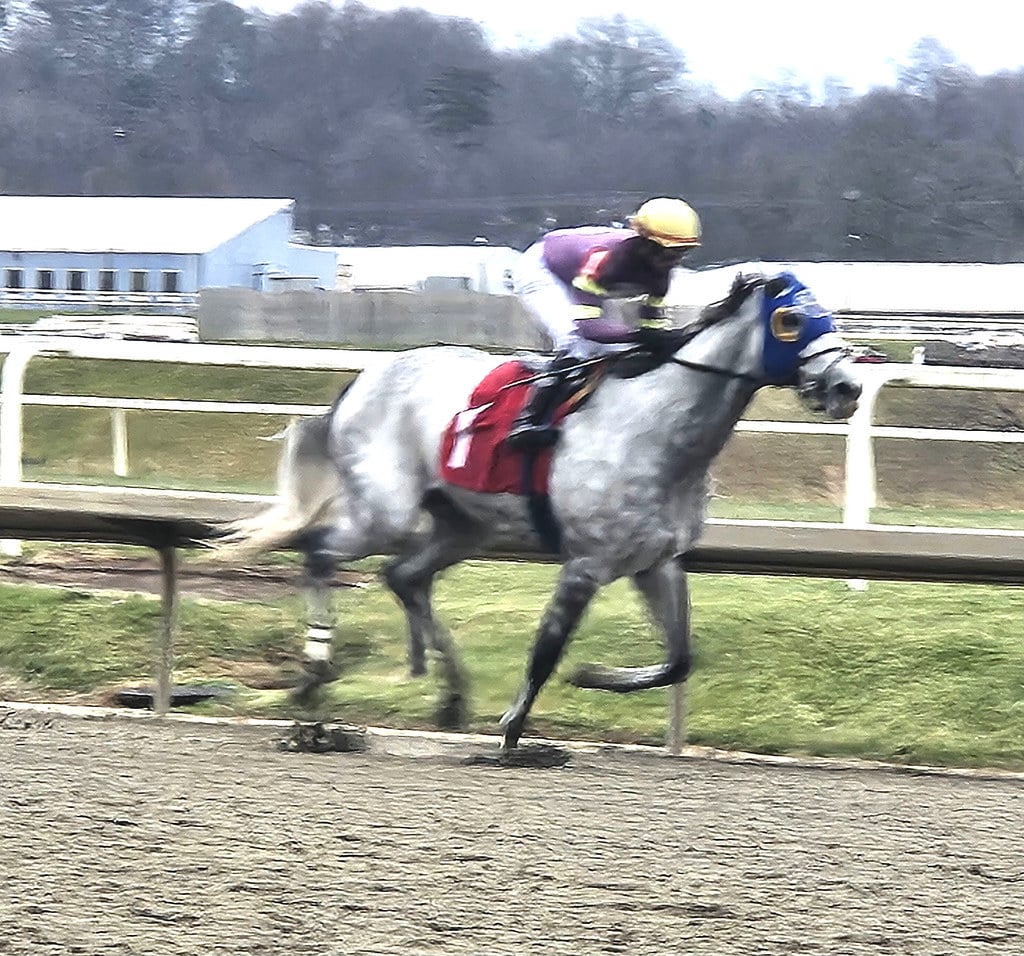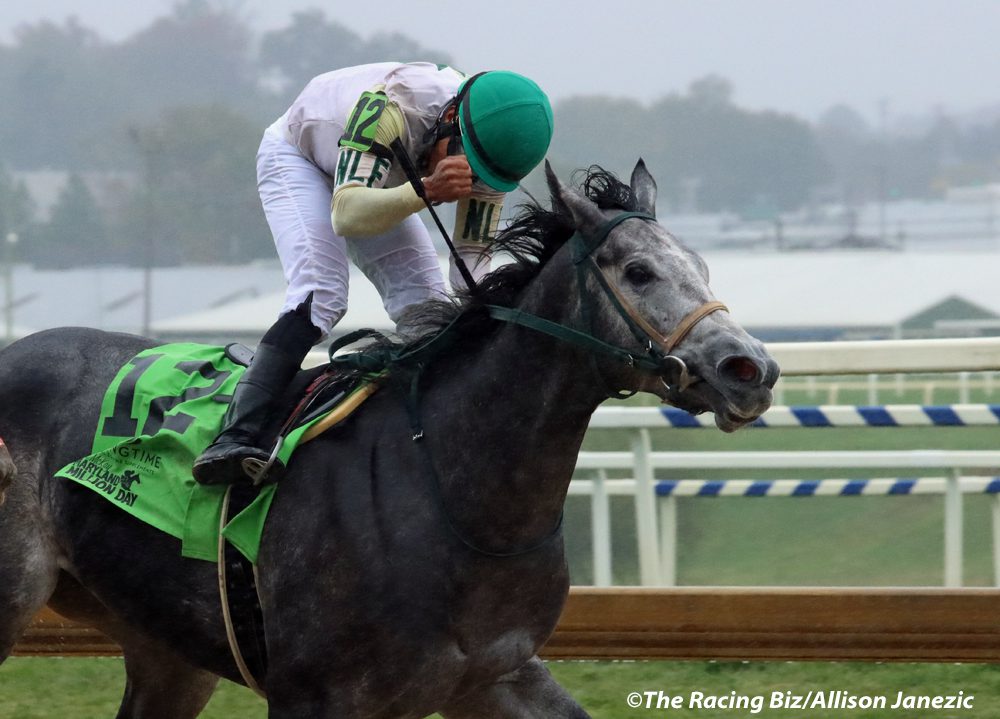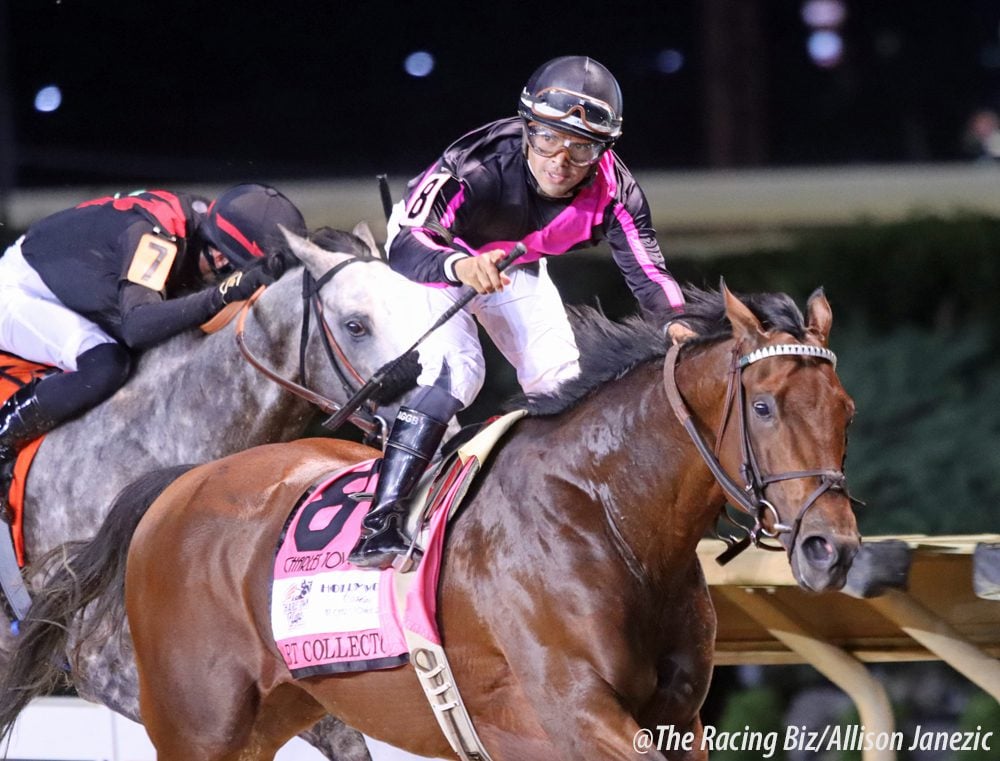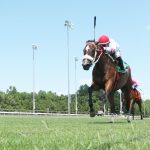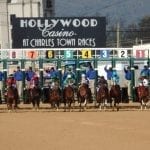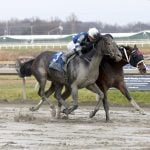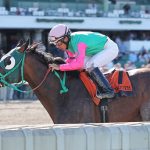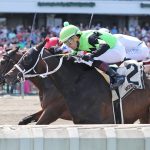The pianist, the racetracker, the dog: Pimlico’s ghosts
As the home of the Preakness Stakes, Pimlico Race Course has long been hallowed ground for generations of racing fans. This historic oval holds stories that extend far beyond the thrills of stretch duels and record-breaking performances.
In fact, for some people, from celebrated horsemen to devoted staff and passionate fans, Old Hilltop was more than a home away from home, it’s their final resting place.
Those stories add another layer of history and sentiment to the storied grounds of this historic home to the Middle Jewel of the Triple Crown. Meet some of the people who are making Pimlico home for eternity.
Percy Longstreet Barry’s fingers may have danced over the keys, but his heart belonged at the races.
Percy Longstreet Barry made his debut at Carnegie Hall at age eight, a piano prodigy whose working life took him into the garage business as an accountant rather than tickling the ivories professionally. His other passion, horses, made him a regular at Pimlico, so when the New York native passed away, his widow Anne Steidl Barry, fulfilled his last request: to have his ashes spread at the track’s finish line.
A few days after his death in August 1944, Mr. Barry’s friends Matt Rice, Edward T. Evans, and Jesse A. Linthicum, sports editor for The Baltimore Sun, joined Matt Daiger, general manager of the Maryland Jockey Club, to lay the avid racing fan and handicapper to rest where he would always be part of the action.
No report on whether or not his final resting place improved his wagering game, though.
Longtime horse trainer Dillon Grey had only one thought when it came to his death: he wanted to spend eternity at the racetrack – and not just any racetrack.
A veteran of Maryland’s half-mile tracks, Grey spent a quarter of a century training horses with the goal of making it to the next level and saddling horses at what Marylanders call the “mile tracks,” the most prominent of which was Pimlico. One article published a decade-and-a-half after his 1949 death even said that this racetracker once saddled a horse in the Preakness, but sadly his name does not appear in the list of conditioners who have sent a horse postward in the state’s signature race, the middle jewel of the Triple Crown.
He suffered a heart attack in April 1949, which worried him enough that he told friends that should he die, he wanted to be buried at Pimlico. Driving to Charles Town Races a few days later, Grey suffered another heart attack and died. His daughter Mary Daniels had her father’s body brought back to Ohio for cremation and then shared her father’s wishes with Pimlico officials. They agreed.
Mary and a friend of her father’s ventured that evening to the track’s infield and dug a hole at the base of the flagpole, depositing Dillon Grey, “by the light of the moon and a flashlight,” as one article put it, into his forever home. Now, nearly nine decades later, this horseman has witnessed his share of Preaknesses but next will get to watch Pimlico rise from the ashes one more time as it undergoes its anticipated demolition and rebuilding.
LISTEN TO THE LATEST OFF TO THE RACES RADIO!
When the Maryland Jockey Club ceased racing in 1889, the Preakness Stakes went to New York for 15 runnings and then returned home to Pimlico in 1909. Contested at a mile, the race was worth only $2,725 to winner Effendi, ridden by Willie Doyle. Effendi rewarded his relatively few backers handsomely, paying $40 to anyone who bet $2.
Doyle, who went on to work as a patrol judge at Pimlico, shared decades later that he only got $64 for his winning ride. “But, when I asked the man who trained the horse to bet enough for me to win $100, he told me to go bet my own money,” the former jockey shared. “And just think, a mere $5 bet would have gotten me that $100!”
Pimlico honored the retired jockey in much more memorable way after his 1950 death. Cremated after his death from complications associated with a stroke several years earlier, Pimlico officials granted his family permission to scatter his ashes at the track’s finish line.
In the mid-1950s, the Cohen brothers rebuilt the grandstand and moved the finish line 50 yards down the racetrack at the same time. On ribbon-cutting day, as the crowd celebrated the new grandstand, the feeling that something – or someone – had been forgotten took over. Suddenly someone shouted: “Oh my God – Willie.”
Boland M. Long, who had been on hand when Effendi and Doyle won that Preakness, grabbed a shovel, walked to the old finish line, scooped up a spadeful of dirt, and moved Willie down to the new finish line.
Hopefully, Long did not drop him in transit.
The weathervane, the blanket of Black-Eyed Susans, the Woodlawn Vase, few things are as synonymous with the Preakness as those three. Toss in one more: Chick Lang.
His grandfather John Mayberry trained the 1903 Kentucky Derby winner Judge Himes. His father Chick Lang, from whom the younger Lang got his name, rode Reigh Count, sire of Triple Crown winner Count Fleet, to victory in the 1928 Derby. Like his grandfather and father, the Baltimore native was destined for the racetrack. Once there, he never met a job he didn’t try, short of actually riding the horses himself.
He started out mucking stalls. Then he was a hot walker, a trainer, a jockey agent, and finally, in 1969, this third-generation racetracker became general manager of Pimlico Race Course. Like William P. Riggs before him, Lang was determined to make the Preakness a shining star rather than the oft-forgotten middle child of America’s most famous series of races. He became the Matt Winn of Old Hilltop, known as Mr. Preakness to his dying day, which came in 2010.
The man who had built the Preakness into a destination, growing the annual crowd from five figures to six, took one final trip around his second home, Pimlico, and then found eternal rest in a familiar spot, the Preakness winner’s circle.
Jockey Ryan Fogelsonger, clad in the black and yellow silks of Pimlico Race Course, rode a white horse around the track’s dirt oval, the ashes of Mr. Preakness in hand. At the end of his journey, he handed Lang off to J.T. Tessier, the racetracker’s grandson, who passed the ashes off to widow Nancy. With their family looking on, Mr. Preakness became one with the place that he loved, forever in repose, watching over his beloved Pimlico.
Heworked as a jockey, a trainer, a jockey agent, and later as security director at Pimlico, and before Bill Gillespie took his last breath, the long-time racetracker requested that he join Barry, Doyle, and Grey, and become one with this long-time home of Maryland racing.
During his tenure at Pimlico, Gillespie was seen riding a bicycle around the backside, making his way around the barns as he kept an eye on the happenings behind the scenes. When he passed in 1990, Dale Austin of The Baltimore Sun reported on the early morning ceremony where Gillespie’s ashes were spread across the finish line at the historic racetrack.
Like any good racetracker, Pimlico Barney the dog had an indeterminate origin story. One tale had him as part of the crew for trainer Jimmy Hechter. When Hechter was preparing to ship horses, he put the dog in a stall to wait for him until the van was ready to go, but in the chaos, the trainer forgot Barney. Stable manager Harry Jeffra found the pup and started feeding him; soon enough, Barney was a regular part of the security staff.

Jeffra’s widow Martha shared a different version of Barney’s origins. A young black puppy wandered up to Harry’s office, located at the gate to the stable area, and the former boxer turned security man took him in. For the next fourteen years, Barney was as ubiquitous as Jeffra himself, welcoming anyone visiting Pimlico’s backside. Whenever the Preakness horses arrived, this four-legged security guard would walk into their stalls first and then give it all a sniff before exiting so that the horse could come in.
Even when the dog was out of sight, all Jeffra had to do was say his name over the public address system on the backside and the dog would appear within minutes, ready for whatever his boss had for him. He would even show the new security guards around, helping Jeffra train them on how to get around the barns that were his home.
When Barney finally slowed down, when time inevitably caught up to him as it does to all of us, one of the track’s veterinarians put him to sleep as Jeffra, Chick Lang, and other track officials discussed where to bury this Pimlico institution. The infield was suggested, a place of honor reserved only for the few, but Jeffra knew that was not where Barney belonged.
On the backside, in the shade of trees near the stable fence, a wooden cross inscribed with ‘Pimlico Barney 1960-1974’ sits near the stakes barn, where the Preakness horses reside during that week leading up to Old Hilltop’s big day. Fifty years later, Barney is still a part of the backside he patrolled for so many years, still part of the lore of this racetrack which has been the locus of dreams realized or denied.
A new Pimlico is in our future. The demolition is expected to begin shortly after the 150th running of the Preakness, with the Middle Jewel expected to return to its historic – but revitalized – home in 2027.
This writer looks forward to a part of her someday joining Barney and the long list of those who already are at eternal rest here, making this grand old racetrack part of her next life.
Sources:
- https://www.nj.com/sports/2021/05/how-mr-preakness-created-a-triple-crown-gem-at-pimlico-race-course-izenberg.html
- https://www.nj.com/sports/2021/05/how-mr-preakness-created-a-triple-crown-gem-at-pimlico-race-course-izenberg.html
- https://stevebyk.com/2022/05/19/phil-maggittis-at-preakness-time-a-pimlico-tale/
- https://www.theracingbiz.com/2021/05/18/home-is-the-horseman/
- https://www.thoroughbreddailynews.com/whats-old-is-new-again-at-pimlico/
“Ashes of Trainer Buried at Pimlico,” Latrobe Bulletin, May 19, 1949.
“Ashes of Willie Doyle Scattered at Pimlico,” Calgary Herald, April 11, 1950.
Austin, Dale, “Ashes of Pimlico’s Gillespie Scattered at Finish Line,” Baltimore Sun, November 11, 1990.
Izenberg, Jerry, “Lang Was All Things to the Race and Track He Loved,” Star-Ledger, May 13, 2010.
Izenberg, Jerry, “Shoe Polish, Willie, and the Preakness,” Honolulu Star Bulletin, May 20, 1977.
Izenberg, Jerry, “Sports at Large: Deep Are the Roots,” Staten Island Advance, May 12, 1965.
Hawks, Ellen, “Pimlico Dog Is Guard, and Host to Horses,” Evening Sun, May 14, 1974.
Linthicum, Jerry, “Horse Lover’s Ashes Reach Pimlico Track’s Finish Line,” Baltimore Sun, August 19, 1944.
“Preakness Is Unchanged By Years Except Payoff, Jockey Victors Say,” Evening Sun, May 10, 1946.
“Trainer’s Ashes Buried in the Center of Pimlico Track,” Baltimore Sun, May 19, 1949.
“Trainer Dillon Grey Interred at Pimlico,” Republican and Herald, May 19, 1949.
Van Valkenburg, Kevin, “‛Mr. Preakness Remembered,’” April 18, 2010.
“Willie Doyle, Ex-Jockey, Dies,” Philadelphia Inquirer, April 10, 1950.
LATEST NEWS


